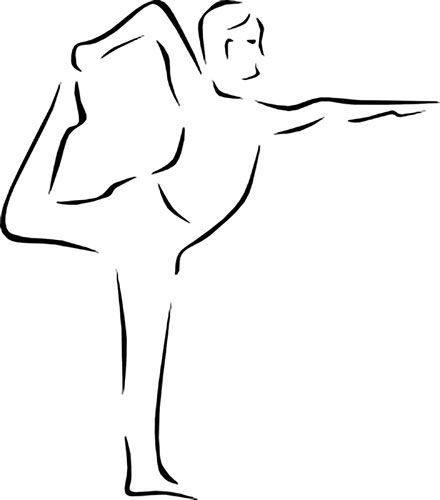.jpg)
Yoga is a Sanskrit word which means union. Yoga is the compilation of physical, mental and spiritual practices that originated in ancient India with the goal of attaining a state of permanent peace. Hindu monks brought yoga to the West in the late 19th century. In the 1980s, Hatha yoga became popular as a system of physical exercise across the Western world.
Many studies have tried to determine the benefits of yoga as a complementary intervention for many illnesses, bolstered by a national survey indicating that long-term yoga practitioners in the United States reported musculoskeletal and mental health improvements.
Yoga’s focus on strength training and flexibility is an incredible benefit to the body. Each of the yoga poses is built to reinforce the muscles around the spine, which, coupled with the abdominal muscles, is the core from which everything else operates. When the core is working properly, posture is improved, which alleviates the strain on joints of the back, shoulders, hips and knees.
Children can benefit from yoga both as a form of physical exercise and a way to improve breathing, focus, mindfulness and stress relief. Yoga builds self-esteem and self-respect, which is the foundation for children to grow and succeed. Children can experience play and focus without worrying about being judged. Children who shy away from physical or group activities for fear of failure or being picked last, can benefit from yoga. Athletic children can also benefit from yoga since it can help them excel in other physical activities and sports.
Yoga promotes physical strength because kids learn to use all of their muscles in new ways. Whether a pose is done standing, sitting or lying down, each one can challenge various muscle groups while helping a child become aware of his/her body.
Balance is a key element of yoga. Many yoga poses challenge one’s balance, and as children learn to improve their physical balance, they will be filled with a sense of accomplishment.
Yoga is beneficial to children of all ages, but it has been found to be particularly so for kids with special needs. Studies have shown that yoga benefits children with autism and ADHD. A study in the American Journal of Occupational Therapy showed that Yoga benefits children with autism because it comprehensively addresses their heightened anxiety, poor motor coordination and weak self-regulation. By becoming aware of their bodies and aware of their breathing, yoga provides them with the ability to cope when they start to feel anxious or upset.
Researchers in Australia and Germany have found that children with ADHD may find relief and improved focus with yoga. It increases concentration, promotes mental and physical discipline, and induces confidence. A 2006 German study found that children undergoing drug treatment for ADHD greatly benefited from yoga practice and that forward bends were particularly effective. “Forward bends increase exhalation by lengthening and deepening the breath,” says the study’s coauthor, Nicole Goldstein, M.D. “This is key in developing concentration.”
Yoga is often used by physical and occupational therapists to help improve the patient’s strength, balance, deep breathing techniques and attention. Whether someone is looking to improve his/her strength, balance, coordination, athleticism or concentration, yoga can be of benefit.
In addition, the Therapy Gym offers yoga classes for ages 4-7 year old and 8-11 year olds. The classes are taught by a yoga therapist who specializes in yoga for kids. To join a yoga class or for more information, please contact The Therapy Gym at 201-357-0417.
Elisheva Fuchs has a doctorate in physical therapy and is the owner of The Therapy Gym in Teaneck. She can be reached at 201-357-0417 or ellie_thetherapygym.com. For more information on The Therapy Gym, please visit www.thetherapygym.com.
By Elisheva Fuchs









